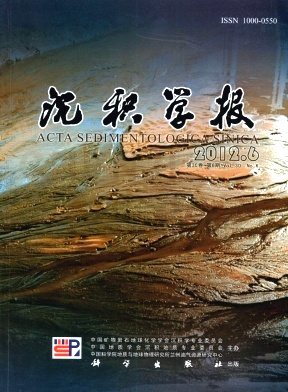Distribution Pattern of Sulfatereducing Bacteria and Its Environmental Mechanism in the Saltmarsh of the Yangtze Estuary
- Publish Date: 2012-12-10
-
Key words:
- saltmarsh /
- sulfatereducing bacteria /
- heterotrophic bacteria /
- the Yangtze Estuary
Abstract: Coastal saltmarshes are among the most productive ecosystems in the world, and scientific evaluations of their potentials as carbon sources or sinks have great significances for the studies on carbon exchanges between land and the sea. Sulfate reduction is the most important process for degradation of soil organic matters of saltmarshes, and the main functional microbes in this process are sulfatereducing bacteria. Two transects from hight tidal flat to bare flat were selected from areas with Spartina alterniflora and native vegetation, respectively, for investigations of spatial distribution characteristics and mechanism of sulfatereducing bacteria (SRB) in the Chongmingdongtan saltmarsh of the Yangtze Estuary. This study was based on data including concentrations of both SRB and heterotrophic bacteria (HB) in soil samples with different depths and plant rhizospheres, content and δ13C value of particulate organic carbon (POC), and molar ratio of Cl/SO2-4 of interstitial water in drilling cores with different altitudes in the saltmarsh. SRB concentrations of the cores increase from the high tidal flat to the bare flat, due to decrease of oxygen content and increase of SO2-4 content of the cores from land to the sea. This suggests that SRB turn to be more important in mineralization of organic matters from the high tidal flat to the bare flat. The variation trend of SRB concentration from the high tidal flat to the bare flat, however, has not been influenced markedly by POC content of the soils. The concentrations of HB in samples with different depths of the drilling core from high tidal flat are markedly greater than those of HB in samples with corresponding depths of the drilling cores from both middle tidal flat and bare flat. This is due to the decreases in both oxygen content and POC content of the cores from land to the sea. Different cores are similar in that the concentrations of HB decrease with depth due to the decrease of soil oxygen content with depth. The concentration of HB in the area with higher POC content is markedly greater that that of HB in the area with lower POC content. The concentrations of SRB are markedly different in rhizospheres of different types of vegetations. SRB is susceptible to rhizospheres of different types of vegetations. Rehizosphere of Phraqmites australis is the most favorable one for SRB growth, and that of Scirpus triqueter comes next. Rehizosphere of Spartina alterniflora is unfavorable to SRB growth, and the root secretion may restrain the development of SRB. The concentration of HB in the rhizosphere soil is greater than that of HB in nonrhizosphere soil, and HB is not susceptible to the rhizospheres of different types of vegetations. Soil organic matter content is the key factor that result in the difference in microbe amount between the drilling cores with the same altitudes from different transects. The difference in microbe amount between drilling cores with different altitudes in one transect, is due to the differences in both soil oxygen content and SO2-4 content between the cores. SRB is susceptible to the organic components originating from Spartina alterniflora, and the organic matters with much components coming from Spartina alterniflora may restrain the growth of SRB. Mineralizations of the organic components originating from Spartina alterniflora probably attribute to HB. The molar ratio of Cl/SO2-4 of interstitial water is low, and is less than 19.33 in most cases, indicating additon of SO2-4 with sources other than the sea. Such additions of SO2-4 offset the consumption of SO2-4 due to sulfate reduction, and make it more difficult to determine quantitatively the intensity of sulfate reduction based on the molar ratio of Cl/SO2-4 of interstitial water in the salt marsh. The more SRB there exists, the greater the molar ratio of Cl/SO2-4 is, and the more marked sulfate reduction is in one drilling core.
| Citation: | Distribution Pattern of Sulfatereducing Bacteria and Its Environmental Mechanism in the Saltmarsh of the Yangtze Estuary[J]. Acta Sedimentologica Sinica, 2012, 30(6): 1088-1098. |






 DownLoad:
DownLoad: